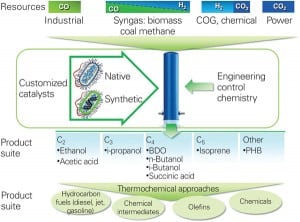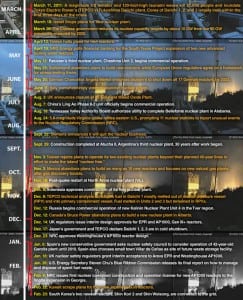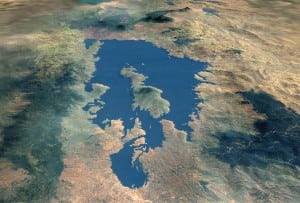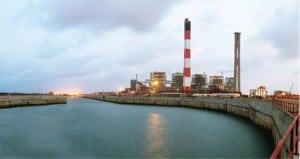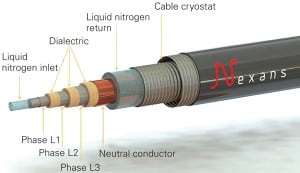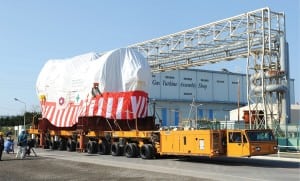Global Monitor
-
Gas
Technology Converts Flue Gases to Jet Fuel
A new technology promises major advantages for coal-fired power plants, steel mills, and other industries that produce flue gases—and it could quell concerns about the increased use of arable land and food prices related to the production of ethanol.
-
Nuclear
THE BIG PICTURE: Nuclear Aftershocks
In the year following the Fukushima accident in Japan, the nuclear sector has seen several setbacks (text in orange) as well as major milestones (white).
-
Nuclear
Less-Familiar Generation III+ Reactors Make Inroads
Following key regulatory approvals in the UK and U.S. of Westinghouse’s AP1000 and AREVA’s EPR Generation III+ reactor designs, France’s nuclear safety authority in February determined that the little-known ATMEA 1 reactor design met international safety criteria for Generation III+ reactors. The reactor is a 1,100-MW pressurized water reactor (PWR) developed and marketed by ATMEA, a 2007-created joint venture between France’s AREVA and Japan’s Mitsubishi Heavy Industries (MHI).
-
Gas
An “Exploding Lake” Becomes a Power Source
Rwanda’s Lake Kivu has a nickname: “Killer Lake.” The shimmering 1,040–square mile body of freshwater on the western branch of the Great East African Rift that straddles the Democratic Republic of Congo and Rwanda has had a bloody history. Not only was it the site of atrocity during the 1994 Rwandan genocide, but scientists say that it is also one of three known “exploding lakes.”
-
Nuclear
New South Korean and Russian Reactors Go Online
Three nuclear reactors under construction in the Eastern Hemisphere reached major milestones over the past few months. South Korea’s Korea Hydro and Nuclear Power Co. connected its 960-MW Shin-Wolsong 1 reactor near Nae-ri to the grid on Jan. 27 and, a day later, its sister plant, the 960-MW Shin Kori 2 (Figure 5) in the southwest city of Gori. Both units are expected to become commercially operational this summer. And last December, Russia began commercial operation of its 950-MW Kalinin 4 plant, a V-320 model VVER 1000.
-
Wind
Two New Offshore Farms Turning Despite Stagnant Global Wind Market
The UK opened two massive offshore wind farms this February on the Irish Sea off the UK’s Cumbrian coast. DONG Energy, SSE, OPW, and a consortium of Dutch pension fund service provider PGGM and Ampere Equity Fund began commercially operating the 367-MW Walney wind farm, estimated to cost $1.58 billion, and Danish wind firm Vattenfall inaugurated the Ormonde Offshore Wind Farm.
-
Coal
India’s Chronic Coal Shortages Threaten Coal Power Ambitions
India has been besieged by a coal shortage of unprecedented severity that has forced privately owned and money-strapped state-owned coal-fired power plants alike to rely on expensive imports from Indonesia and South Africa to replenish woefully inadequate stocks.
-
Business
POWER Digest (April 2012)
CSP Giants Form Alliance. Concentrating solar power companies Abengoa, BrightSource Energy, and Torresol Energy in early March formed the Concentrating Solar Power Alliance, an organization dedicated to educating U.S. regulators, utilities, and grid operators about the unique benefits of concentrating solar power (CSP) and of thermal energy storage. The U.S. has more than 500 MW […]
-
Business
High-Temperature Superconductor Technology Stepped Up
A new project planned by RWE and partners Nexans, the Karlsruhe Institute for Technology (KIT), and Jülich is poised to mark another milestone for high-temperature superconductor (HTS) cable technology, which transports electricity without losses when cooled down to about –200C (–392F).
-
Gas
MHI Ships First Commercial J-Series Turbine
The first unit of Mitsubishi Heavy Industries’ (MHI’s) much-watched J-Series gas turbine, a technology MHI has been testing for a year, was shipped this December from its Takasago Machinery Works in Hyogo Prefecture, Japan, for commercial use at Himeji Unit 2, also in Hyogo, owned by Kansai Electric Power Co.

